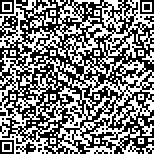下载中心
优秀审稿专家
优秀论文
相关链接
首页 > , Vol. , Issue () : -
摘要

甲烷是重要的温室气体。大气中的甲烷排放来源多,影响因素复杂,基于排放因子和活动水平的“自下而上”编制的排放清单有较大的不确定性。覆盖全球的甲烷卫星观测为“自上而下”的验证及校正排放清单提供了有效手段。本文系统介绍了利用甲烷卫星观测和大气传输模型进行正向和反演清单校核的原理方法、关键技术和研究现状。以2020年为例,应用GOSAT卫星甲烷观测、GEOS-Chem大气化学传输模型对全球甲烷排放清单进行了正向和反演校核。国别校核结果表明,在甲烷排放量最大的10个国家中,中国、印尼排放量显著低于先验清单,俄罗斯、印度、孟加拉国排放显著高于先验清单,其它国家与先验估计无统计显著的区别。最后,本文展望了基于卫星观测的甲烷清单校核技术的发展方向。
Objective. Methane is a strong greenhouse gas responsible for roughly a quarter of radiative forcing since industrialization. Reducing anthropogenic methane emissions is considered a vital measure to slow down climate change. Conventional “bottom-up” inventories, compiled based on emission factors and activity data, are subject to large uncertainties. Atmospheric observations such as those made by satellite instruments provide a useful “top-down” approach to verifying and improving emission inventories. The objective of this study is to present the application of satellite observations to the verification of methane emission inventories through forward simulations and inversion analyses. Method. We first presented varied types of satellite observations (short-wave infrared vs. thermal infrared observations, area-flux mappers vs. point-source imagers) and retrieval methods (CO2-proxy method vs. full-physics method) and their suitability for inventory verification. We then discussed extensively the role of chemical transport models in interpreting satellite observations, the method of properly comparing model methane simulations to satellite column observations, and the effects of simulation errors on emission inventory verification. Finally, we demonstrated the two-stage verification with forward simulations and then an inverse analysis for global methane emissions, using the GEOS-Chem chemical transport model, GOSAT methane column observations for 2020, and two sets of bottom-up emission inventories. Result. In the forward simulation, we developed a bias correction procedure to reduce the season- and latitude-dependent systematic biases. The bias-corrected simulation results were compared with satellite column observations to qualitatively assess the quality of emission inventories. In the inverse analyses, we presented the quantification of emissions for top methane-emitting countries. The results showed that the prior inventory significantly overestimated methane emissions in China and Indonesia, underestimated in Russia, India, and Bangladesh, and statistically agreed with the rest. Finally, the paper provided an outlook for the application of satellite observations in the field of methane monitoring and discussed the direction for future technical developments. Conclusion. The paper demonstrated the potential of using satellite observations to verify methane emission inventories. While the forward simulation is a fast but qualitative method, the inverse analyses provided a more quantitative verification of emission inventories.

